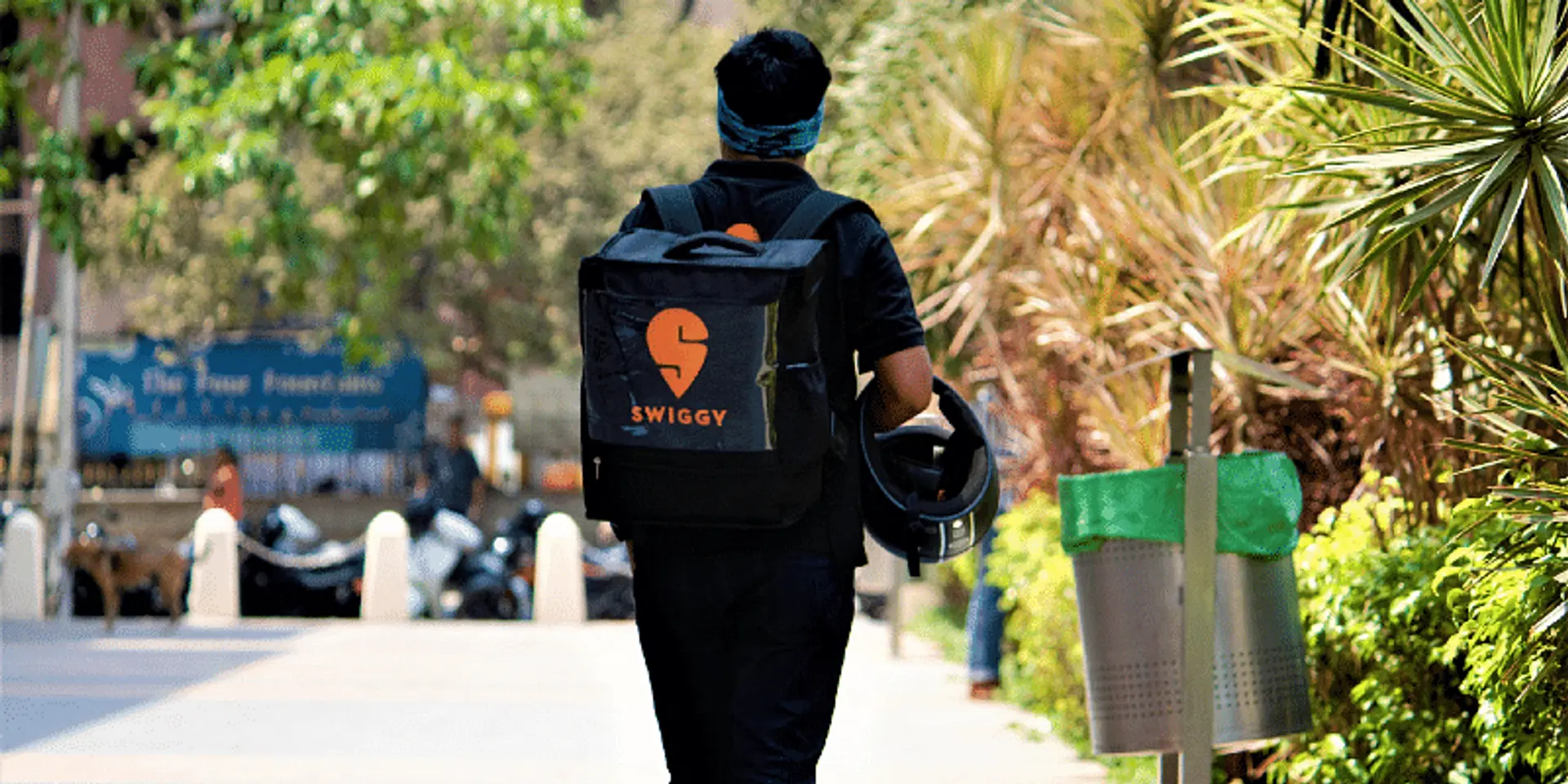Swiggy shares fall 4% as loss widens in third quarter
Since its listing in November last year, Swiggy’s stock has stayed flat against its debut price of Rs 412 per share on the BSE. After reaching an all-time high of Rs 617 on December 23, 2024, the stock has nearly halved.
Swiggy's shares fell 4% to Rs 400 per share on the Bombay Stock Exchange (BSE) after the company reported a widening loss of 39% year-on-year (YoY) in the third quarter. Prices hit a low of Rs 385 per share, before recovering and stabilising at Rs 400.
On November 13, Swiggy’s shares debuted on the NSE at Rs 420, marking a 7.7% premium over the issue price of Rs 390. On the BSE, the stock opened at Rs 412, reflecting a 5.64% gain from the IPO price.
Since its listing, Swiggy’s stock has stayed flat against its debut price of Rs 412 per share on the BSE. After reaching an all-time high of Rs 617 on December 23, 2024, the stock has nearly halved.
On a consolidated level, the foodtech company's losses widened to Rs 799 crore from Rs 574 crore in the previous year.
Swiggy clocked a 30% YoY growth in operating revenue to Rs 3,993 crore in the quarter ended December 2024, up from Rs 3,048 crore earned in the corresponding quarter last year, according to an exchange filing.
However, the company expects to be on track for positive adjusted EBITDA timeline on a consolidated level by the October-December 2025 quarter.
Swiggy’s Q3 FY25 results were mixed; while it showed strong growth in food delivery, it struggled in the quick commerce (Instamart) segment. The company outperformed Zomato in gross order value (GOV) growth for food delivery, reporting a 19.2% YoY increase, compared to Zomato’s 16.8% YoY growth.
This growth was driven by a 5.9% QoQ rise in active users and the success of Swiggy’s 10-minute delivery service (BOLT), which contributed 9% of total orders, up from 5% in Q2.
However, Instamart struggled. The company added new stores in the quarter and expanded into new areas, while Zomato’s Blinkit focused on strengthening its existing network. As a result, Swiggy’s profit margins in quick commerce dropped sharply.
Instamart’s fixed costs increased due to higher marketing expenses and store investments, and its profitability worsened compared to Blinkit's. Despite these issues, Instamart’s GOV grew 88.1% YoY, and the average order value rose 7% QoQ to Rs 534. Swiggy plans to make Instamart profitable by Q4 2025.
Compared to Blinkit, Instamart is behind in several key areas, including profit margins, total orders, and store count. This has led analysts to favour Zomato over Swiggy.
Swiggy’s revenue grew 31% YoY to Rs 3,993 crore, but its losses increased by 38% YoY to Rs 726 crore, with an EBITDA margin of -18.2%.
Swiggy’s market cap of $11 billion is significantly lower than Zomato’s $26 billion, reflecting its weaker performance in quick commerce.
Reactions from brokerages
Brokerages had mixed reactions to Swiggy after its net loss widened to Rs 800 crore in Q3 FY25 from Rs 524 crore a year earlier, as intensifying competition and aggressive dark store expansion continued to pressure margins. Analysts expect these challenges to persist in the coming quarter as well.
Kotak Institutional Equities has initiated coverage on Swiggy with a BUY rating and a fair value of Rs 500, citing its strong market position and growth potential in quick commerce.
UBS maintained a 'buy' rating on Swiggy with a target price of Rs 515, while Macquarie reaffirmed its 'underperform' stance, lowering its target to Rs 325.
Despite near-term losses, Swiggy is expected to turn EBITDA positive by FY27 and net profitable by FY28. While competition, regulatory risks, and urban demand fluctuations pose challenges, Kotak said it remains optimistic about Swiggy’s long-term growth, improving unit economics, and market expansion strategies, positioning it well against competitors like Zomato.
Nuvama pointed to Swiggy’s aggressive dark store expansion as a key challenge for the March quarter.
Substantial investments in Instamart have further weighed on margins amid stiff competition from Blinkit and Zepto. The segment’s contribution margin declined to -4.6% in Q3 FY25, down from -1.9% in the previous quarter.
Macquarie highlighted concerns over rising losses in Swiggy’s quick commerce segment, citing margin pressure from network expansion and intense competition. "The hyper-competitive phase is likely to persist for a few more quarters. At this juncture, we favour Zomato over Swiggy," the firm noted.
Edited by Swetha Kannan








